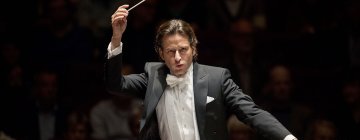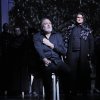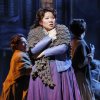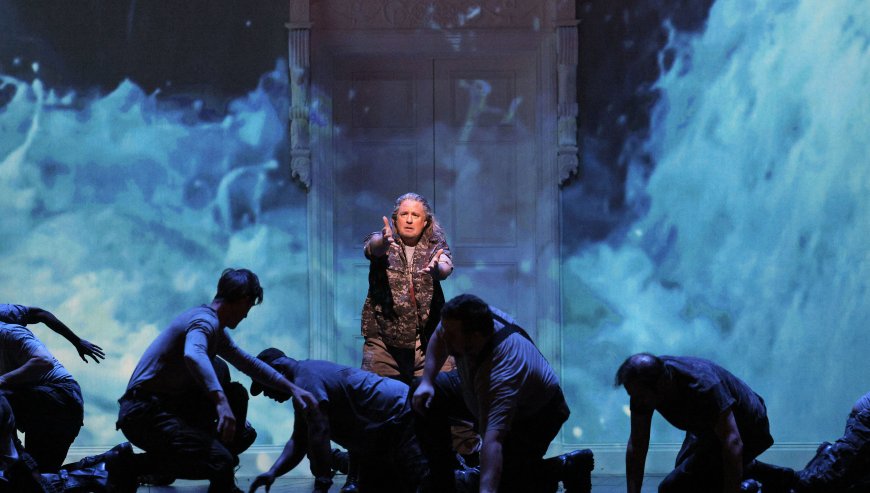
Mozart’s Idomeneo will never be the composer’s most popular work, but it is a great opera, full of fire and vivid characterizations.
Merely 24 years old when he wrote the score, Mozart poured everything he had into Idomeneo and San Francisco Opera’s excellent new production, which opened on Saturday, June 14, at the War Memorial Opera House and runs through June 25, showed the work’s dramatic power and musical beauty thanks to a fully committed cast.
This is the kind of opera that Mozart dreamed of making, filled with first-rank singers down to the secondary roles. But after its Munich premiere in 1781, Idomeneo had only one subsequent private performance in Vienna. It wasn’t until the 20th century that the work entered the standard repertory, thanks in no small part to SF Opera’s groundbreaking 1977 production.
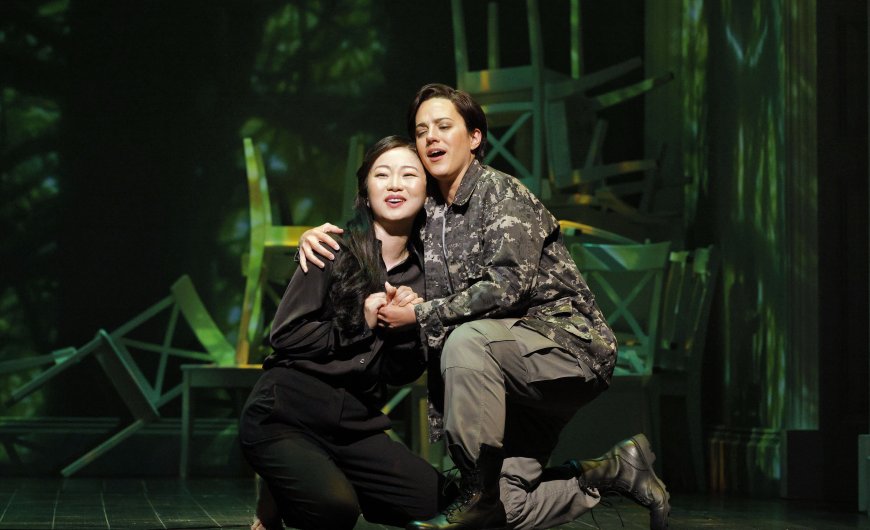
Idomeneo takes up the story of the titular king of Crete’s return from the Trojan War. Beset by storms, he offers a rash vow to the god Neptune to sacrifice the first person he sees on shore if he and his crew should arrive safely home. Naturally, Idomeneo is greeted by his son Idamante. The prince is in love with Ilia, a captured Trojan princess, and she responds to his ardent wooing. But the princess Elettra expects to marry Idamante and is furious to discover he’s considering an alliance with his enemy.
Though shorn of its ballet and several arias, as is customary in modern presentations, this is a big show that SF Opera is staging. Australian director Lindy Hume’s production relies for its sense of scale on cinematographer Catherine Pettman’s dramatic filmed images of the Tasmanian coastline. The visuals are artfully projected onto Michael Yeargan’s spare set by projection designer David Bergman.
Following this prompt, costume designer Anna Cordingley has buttressed the shoulders of the king’s royal mantle with feathers, possibly a reference to the Palawa/Pakana first people of Tasmania, to whom the production team pays respect in the program book. Otherwise, the costuming is modern dress and predominantly black and gray, effectively showcased by Verity Hampson’s original lighting, revived for these performances by Justin A. Partier.
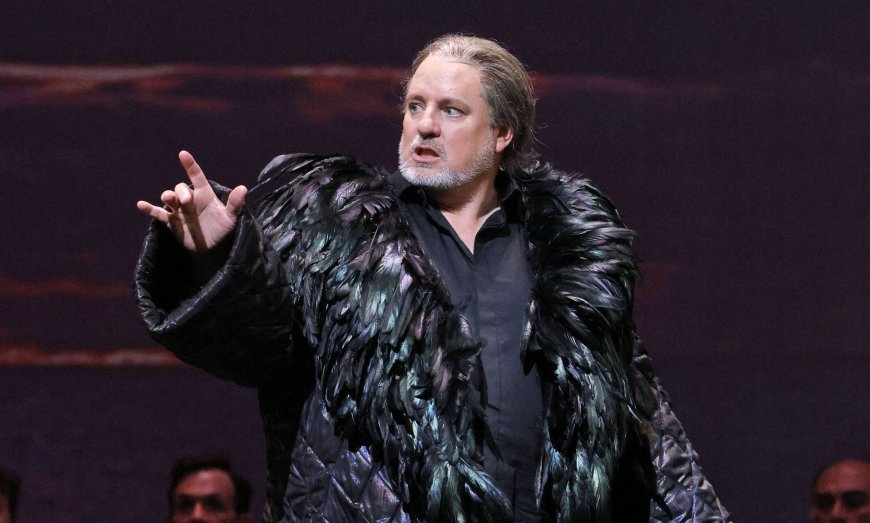
Hume’s direction focuses on the characters’ emotions and interrelationships, and she pulls strong acting performances from all of her seasoned principal singers. Tenor Matthew Polenzani conveyed the king’s anguish and regret in a manner that felt authentic and lived. He’s completely comfortable with the role’s vocal demands, and if his florid runs in the centerpiece aria “Fuor del mar” (Saved from the sea) were smudged, that’s partly because Mozart unkindly put most of them in the singer’s midrange. Projecting a firm sound out into the War Memorial auditorium took precedence.
On Saturday, we learned from SF Opera General Director Matthew Shilvock that mezzo-soprano Daniela Mack, in the role of Idamante, performed a little bit under the weather, but I doubt the audience would have known without the announcement. She may have felt that her energy was down, but even at 90 percent, she has more than enough power and vocal agility to put over her part. In dramatic terms, she was a powerful presence, especially in her recitatives and her entrance aria, “Non ho colpa” (I’m not guilty).
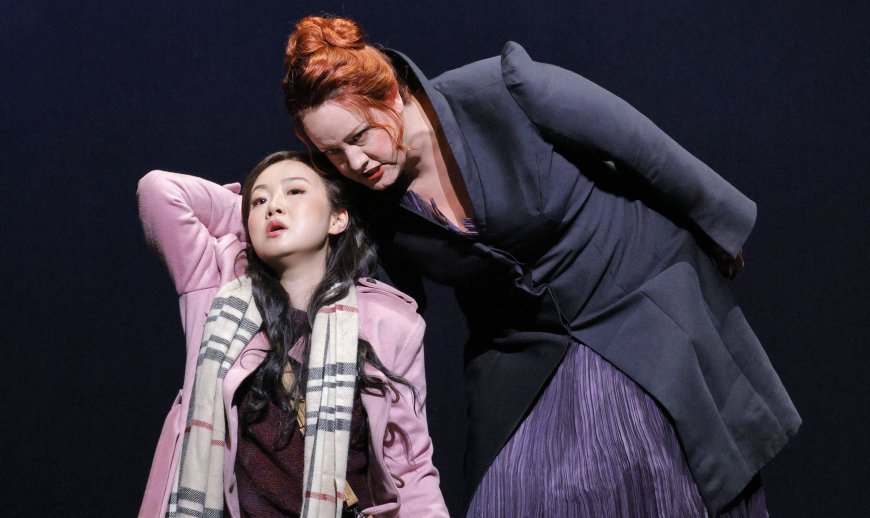
But the evening’s singing laurels went to Ying Fang as Ilia and Elza van den Heever as Elettra. In a part stuffed with gorgeous melodies designed to show off a lyric soprano, Fang made an indelible impression, her voice in pristine condition, beautiful and well controlled. In a much broader role, van den Heever commanded the stage in her three highly contrasting arias. Hers is a huge voice, but she brought delicacy and warmth to her seductive Act 2 “Idol mio” (My dearest). Then she showed off her Straussian power by exploding from silence into her rafter-shaking final aria, rushing out to stunned applause from the audience.
Out of a number of small roles, tenor Alek Shrader as the king’s advisor, Arbace, must be mentioned. Hume has him deliver one of the two arias Mozart wrote for the character, and the opportunity paid off, as Shrader sang with the confidence and tonal sweetness for which he has been noted.
John Keene’s chorus has a lot of work in the show and performed brilliantly. Music Director Eun Sun Kim, for whom there are no superlatives left, led a tautly dramatic performance from the pit. In Mozart’s expansive score, the orchestra has several moments to shine, and these musicians did.
This story was first published in Datebook in partnership with the San Francisco Chronicle.
